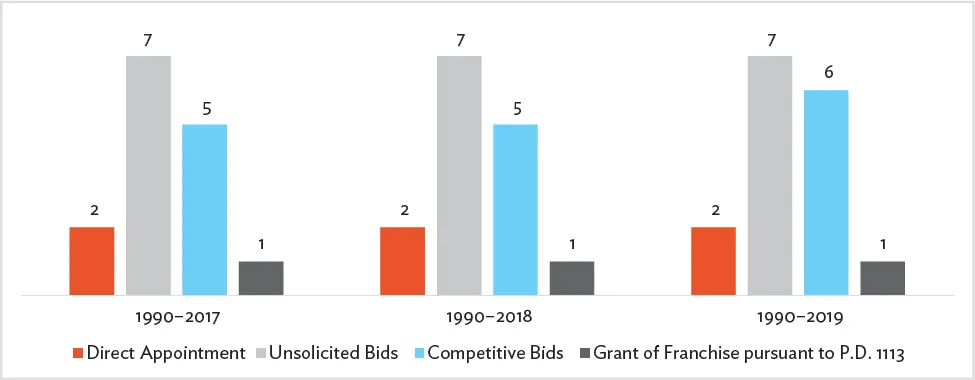
- 206 pages
- English
- ePUB (mobile friendly)
- Available on iOS & Android
About this book
This publication presents a detailed overview of the current state of the public–private partnership (PPP) environment in the Philippines. In over three decades, the country developed a robust public–private partnership (PPP) enabling framework through the Build-Operate-Transfer Law of 2012 and the PPP Center. Among developing member countries of the Asian Development Bank, the Philippines has a relatively mature market that has witnessed 116 financially closed PPPs. Under the government's 2017–2022 Development Plan that has an infrastructure investment target of $180 billion, PPPs are expected to play a pivotal role in financing national and subnational infrastructure investments. With a pipeline of 37 PPPs, the government is taking various steps to further improve the environment for PPPs.
Frequently asked questions
- Essential is ideal for learners and professionals who enjoy exploring a wide range of subjects. Access the Essential Library with 800,000+ trusted titles and best-sellers across business, personal growth, and the humanities. Includes unlimited reading time and Standard Read Aloud voice.
- Complete: Perfect for advanced learners and researchers needing full, unrestricted access. Unlock 1.4M+ books across hundreds of subjects, including academic and specialized titles. The Complete Plan also includes advanced features like Premium Read Aloud and Research Assistant.
Please note we cannot support devices running on iOS 13 and Android 7 or earlier. Learn more about using the app.
Information
III.Sector-Specific Public–Private Partnership Landscape
ROADS
Parameter | Value | Unit |
Length of the total road network | 200,037 | kilometers |
Quality of road infrastructure | 3.70 | 1(low) – 7(high) |
1. Contracting Agencies in the Road Sector
2. Road Sector Laws and Regulations
2.1 Foreign Investment Restrictions in the Road Sector

2.2 Standard Contracts in the Road Sector
Type of contract | Availability |
PPP/concession agreement | × |
Performance-based operation and maintenance contract | × |
Engineering procurement and construction contract | × |
3. Road Sector Master Plan


3.1 Projects under Preparation and Procurement in the Road Sector


4. Features of Past Public–Private Partnership Projects in the Road Sector
Table of contents
- Front Cover
- Title Page
- Copyright Page
- Contents
- Tables and Figures
- Foreword
- Acknowledgments
- Definition of Terms
- Abbreviations
- Guide to Understanding the Public–Private Partnership Monitor
- Currency Equivalents
- I. Overview
- II. National Public–Private Partnership Landscape
- III. Sector-Specific Public–Private Partnership Landscape
- IV. Local Government Public–Private Partnership Landscape
- Appendixes
- References
- Footnotes
- Back Cover


